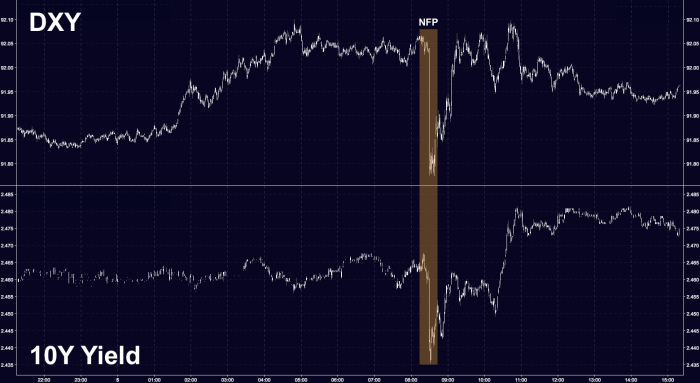What to make of Friday’s job’s report?
Probably not much. Yes, the headline was a disappointment, but that 148K isn’t going to have any material impact on the dot plot, and don’t forget, AHE was in line. That’s probably why the dollar rebounded from its knee-jerk dip and why yields reacted similarly:

But there’s something else worth noting here. Or at least according to BofAML.
Apparently, economists exhibit an overriding tendency to be too pessimistic headed into year-end and too optimistic once the new year dawns. Seen in that context, December payrolls disappointed expectations “as expected.”
That last bit might seem like an oxymoron – but not for BofAML’s credit team who writes the following:
What does this mean for investors? Well, if you assume that the U.S. economy is on sound footing, then this isn’t really something be overly concerned about.
With payrolls growing 148K (vs. 190K consensus) December’s jobs report came in below expectations as expected. Wait, read that again – how can you be “below expectations as expected”? Well it turns out that you can, as in twelve of the last fifteen years we have seek peak upward surprises to economic data around the turn of the year, only to see a sharp subsequent reversals toward downward surprises (Figure 1). Only during the financial crisis (2008 and 2009) and the near-recession around the turn of 2015/2016 does this approximate pattern not hold.
Such seasonality is truly remarkable and unlike anything we have seen before.

What does this mean for investors? Well, if you assume that the U.S. economy is on sound footing, then this isn’t really something be overly concerned about.
That said, it does suggest that to the extent gains in risk assets over the past couple of months have been predicated on upside surprises in the economy, well then that might have been misplaced optimism.












Leave A Comment